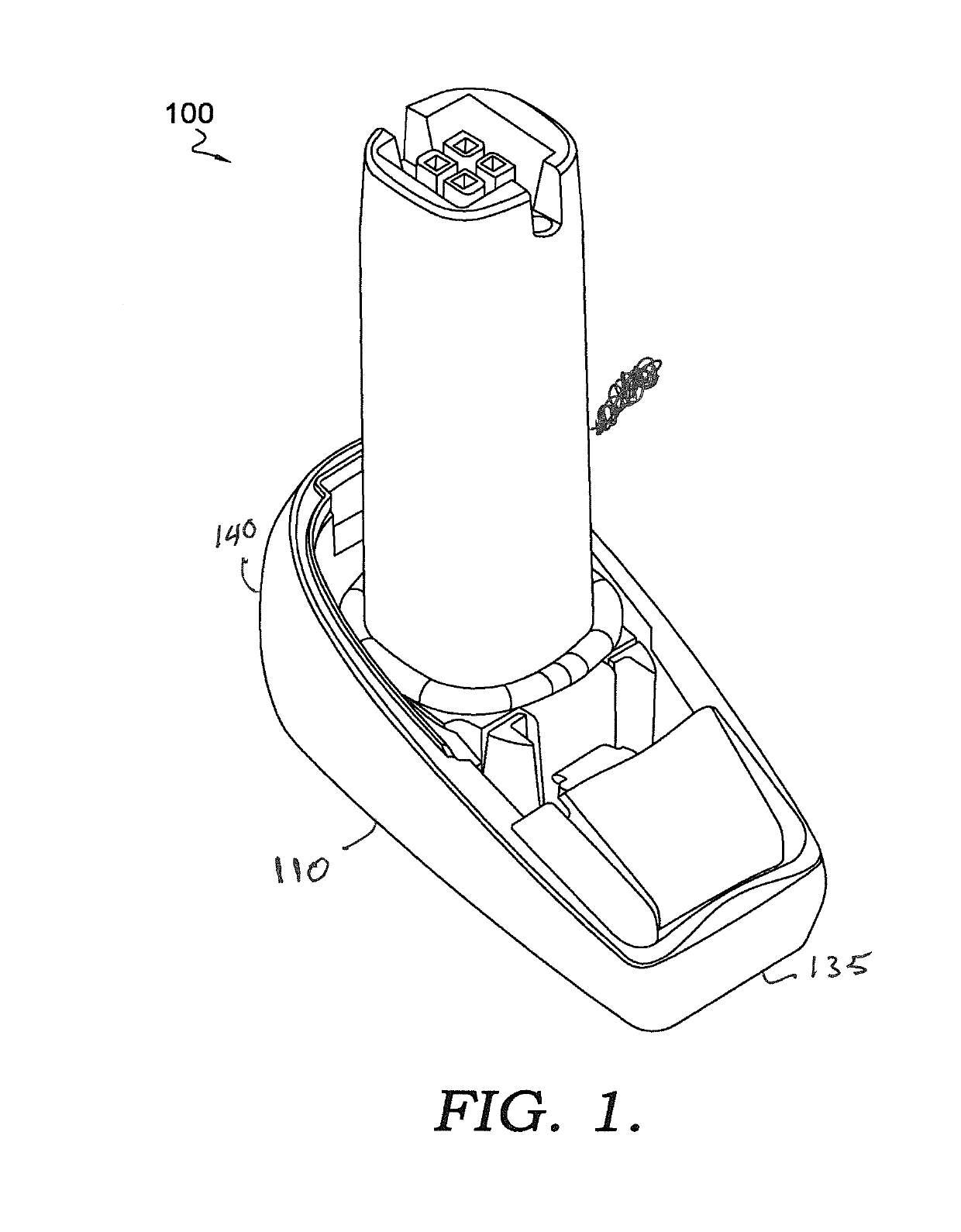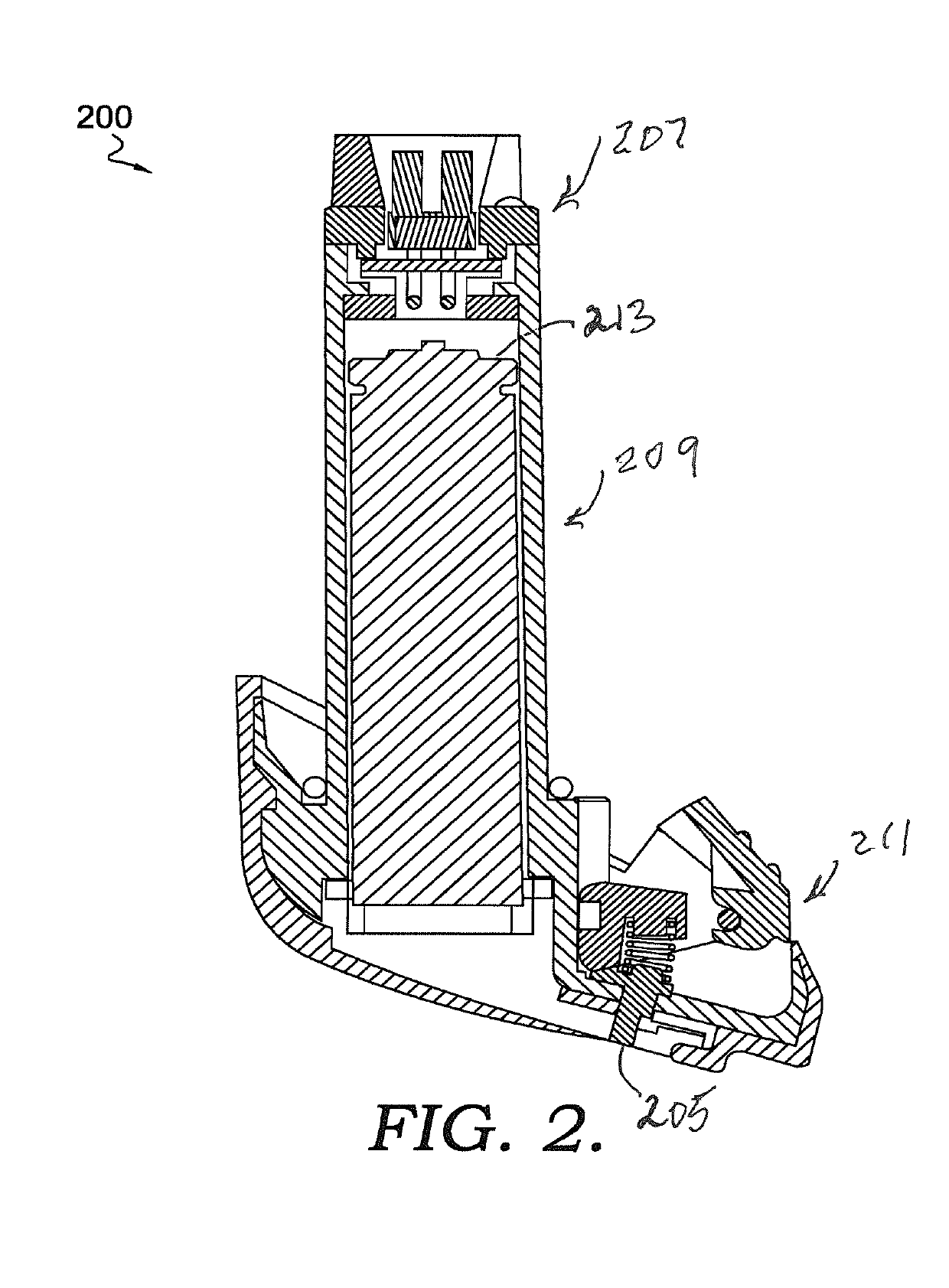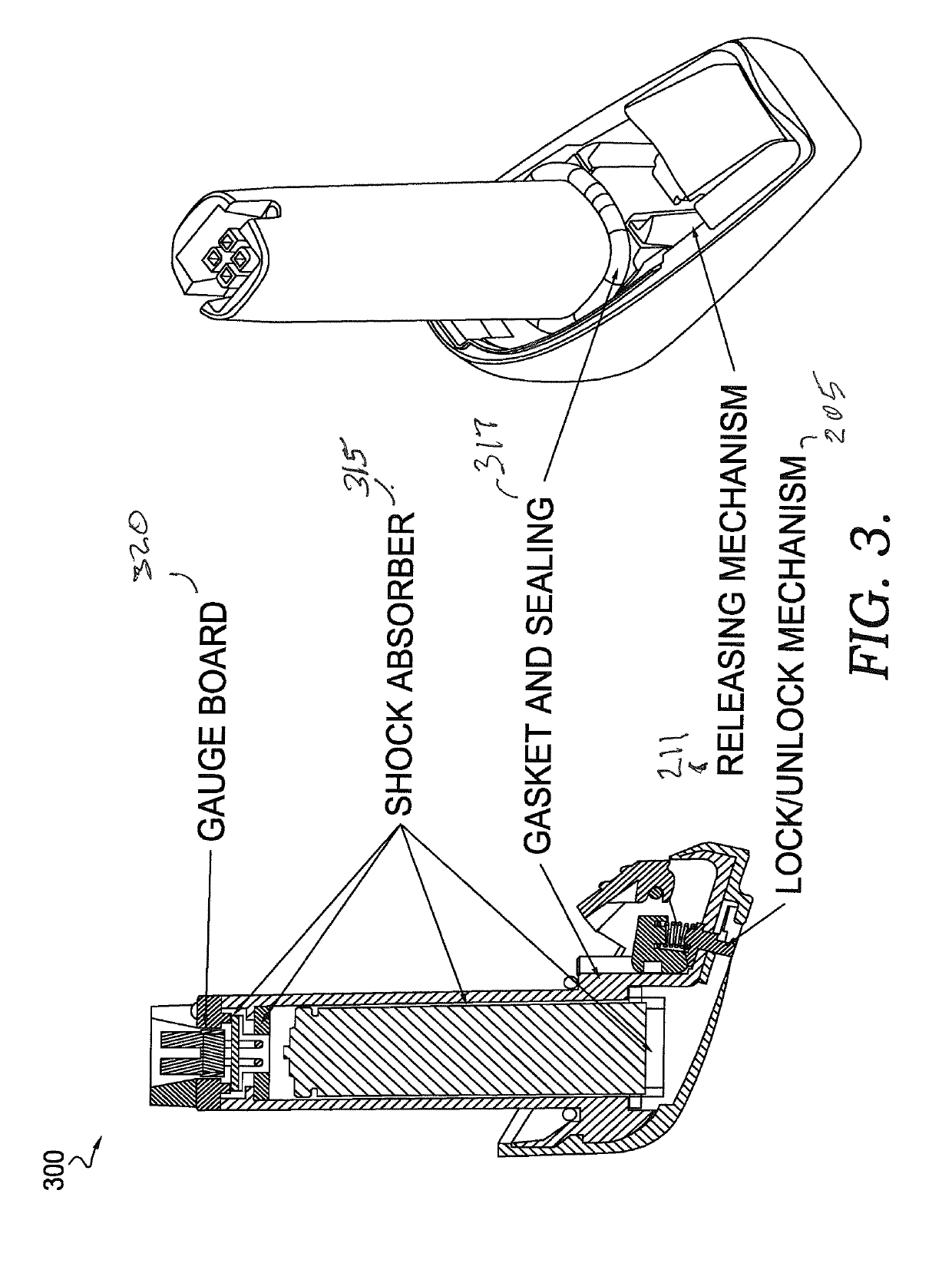Battery pack with secure-locking mechanism and shock absorbing system with easy insertion mode
- Summary
- Abstract
- Description
- Claims
- Application Information
AI Technical Summary
Benefits of technology
Problems solved by technology
Method used
Image
Examples
Embodiment Construction
[0024]Embodiments of the invention include a battery pack 100 as shown in FIG. 1 that prevents damage and malfunctions to the Li-ion cell (i.e. battery cell). The battery pack 100 includes a fast release system that is part of an innovative system to lock and unlock (205) the battery pack in and from the device. The aim of the disclosure is to provide a more safe and user-friendly battery pack that can be used and changed very quickly, avoiding any leakage. Moreover, the Li-ion cell is protected with a 6-axis damping solution.
[0025]Turning now to FIG. 2, a cross-sectional view 200 of battery pack 100 is shown having three sections: A connection area 207; a cell box 209 that contains a battery cell 213; and a release mechanism 211 with lock / unlock system 205.
[0026]Embodiments of the invention are related to an innovative battery pack for an industrial handheld scanner, with a double system of locking: Standard locking of the battery pack inside the handle component; and secure lockin...
PUM
 Login to View More
Login to View More Abstract
Description
Claims
Application Information
 Login to View More
Login to View More - R&D
- Intellectual Property
- Life Sciences
- Materials
- Tech Scout
- Unparalleled Data Quality
- Higher Quality Content
- 60% Fewer Hallucinations
Browse by: Latest US Patents, China's latest patents, Technical Efficacy Thesaurus, Application Domain, Technology Topic, Popular Technical Reports.
© 2025 PatSnap. All rights reserved.Legal|Privacy policy|Modern Slavery Act Transparency Statement|Sitemap|About US| Contact US: help@patsnap.com



